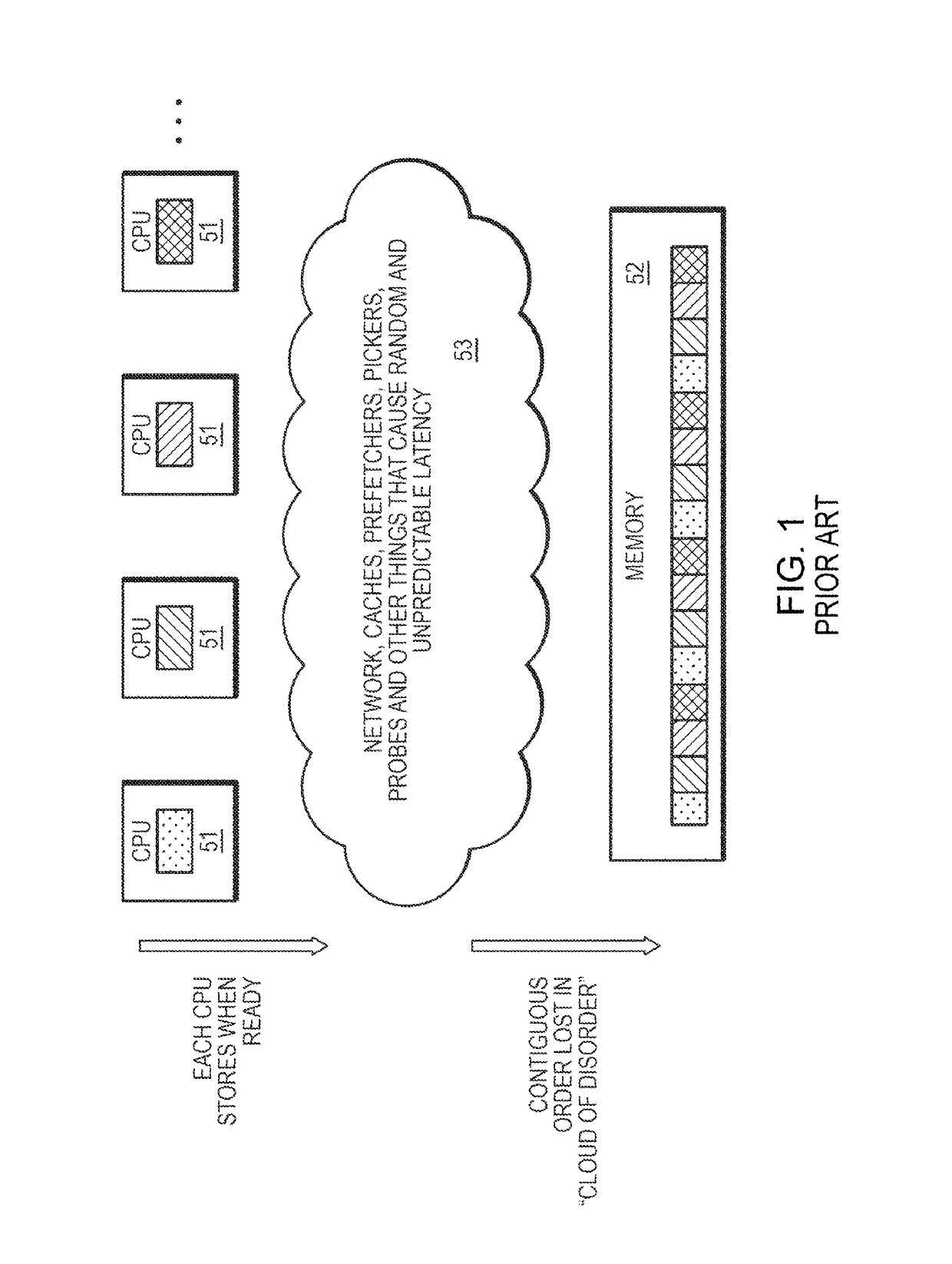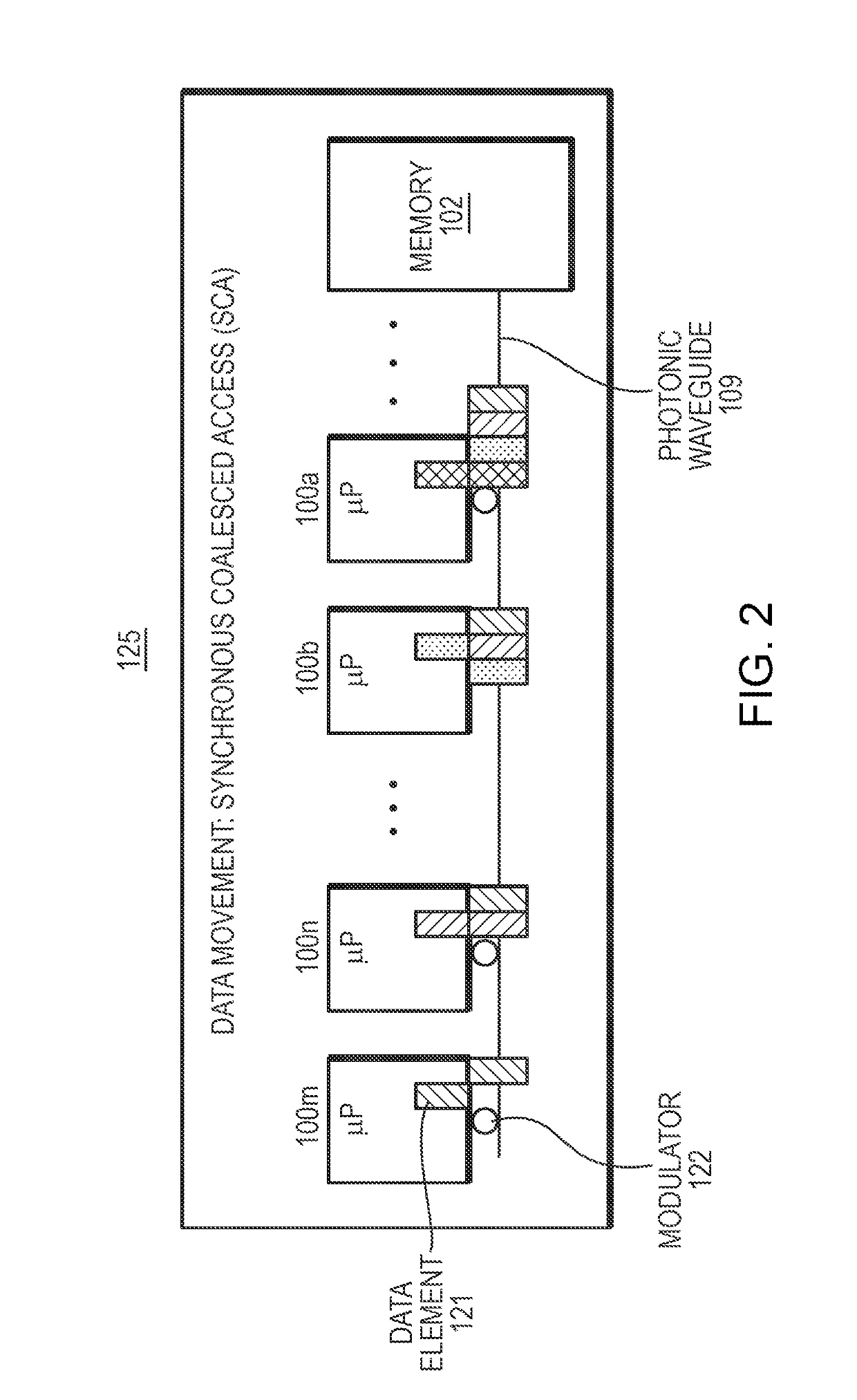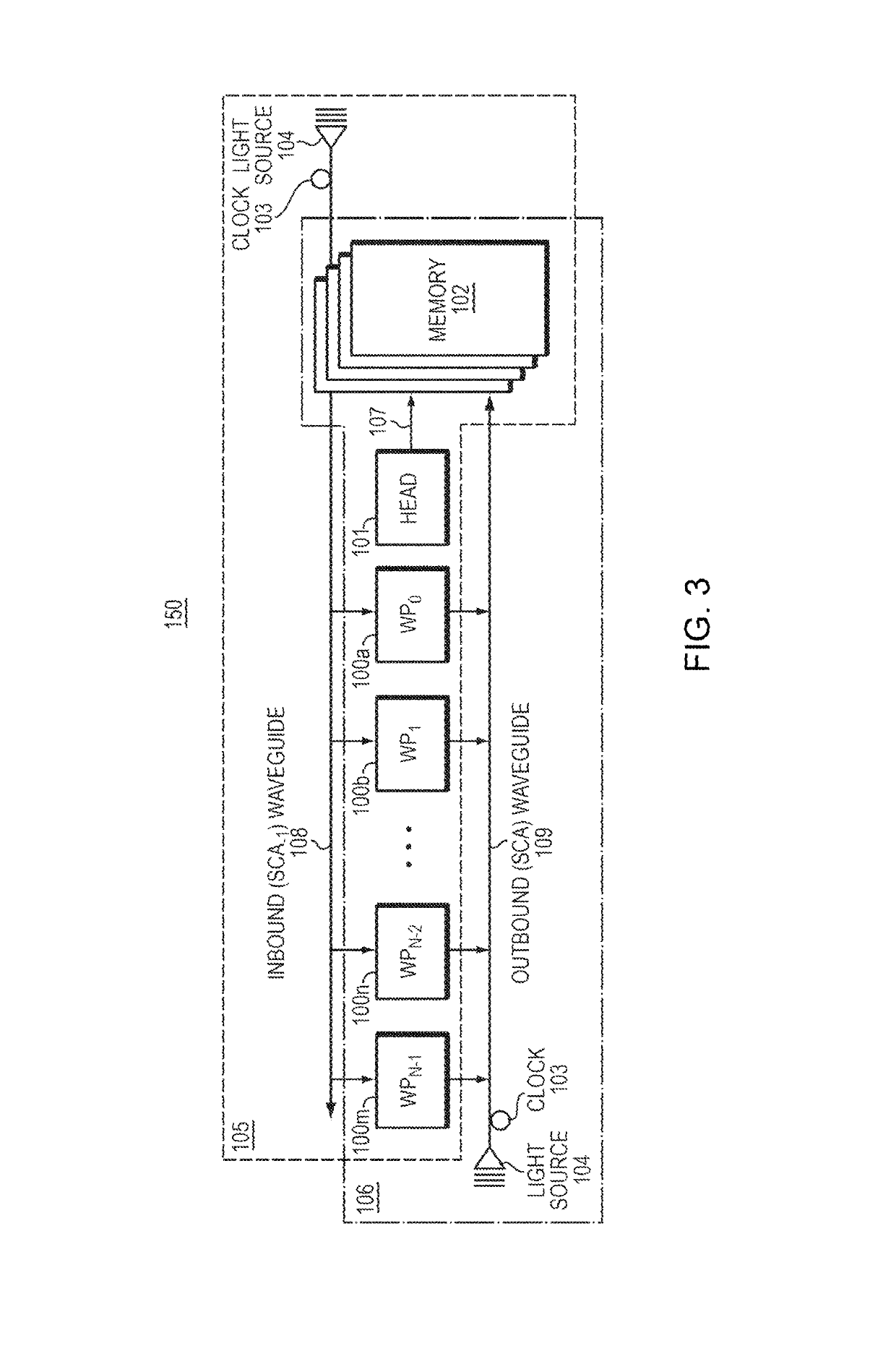ISA extensions for synchronous coalesced accesses
a technology of synchronous coalesced access and extension, which is applied in the direction of unauthorized memory use protection, multi-programming arrangements, instruments, etc., can solve the problems of increasing performance, limiting performance, and limiting performance in interconnection networks, so as to and reduce the effect of non-locality
- Summary
- Abstract
- Description
- Claims
- Application Information
AI Technical Summary
Benefits of technology
Problems solved by technology
Method used
Image
Examples
Embodiment Construction
[0036]A description of example embodiments of the invention follows.
[0037]The below description of the proposed approach is organized as follows. Related work, including how existing parallel architectures work with distributed data, is discussed in Section I. Section II provides an overview. Section III introduces the P-sync architecture of Whelihan and the SCA operation. Section IV describes how multi-dimensional matrices may be mapped to linear memory. In Section V, new ISA extensions of the proposed approach are proposed and respective effects of these ISA extensions on an example code stream for the challenging distributed matrix transpose operation are illustrated. Section VI provides a conclusion.
I. Related Work
[0038]One advantage of the proposed approach, compared with existing parallel architectures, is that the proposed approach may combine memory traffic of multiple independent processors into a single efficient memory transaction. To follow, existing approaches are discu...
PUM
 Login to View More
Login to View More Abstract
Description
Claims
Application Information
 Login to View More
Login to View More - R&D
- Intellectual Property
- Life Sciences
- Materials
- Tech Scout
- Unparalleled Data Quality
- Higher Quality Content
- 60% Fewer Hallucinations
Browse by: Latest US Patents, China's latest patents, Technical Efficacy Thesaurus, Application Domain, Technology Topic, Popular Technical Reports.
© 2025 PatSnap. All rights reserved.Legal|Privacy policy|Modern Slavery Act Transparency Statement|Sitemap|About US| Contact US: help@patsnap.com



